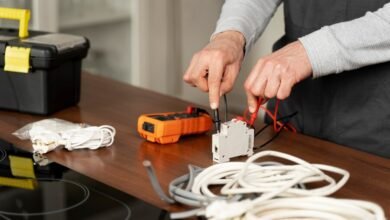How to Improve Furnace Efficiency Through Repair and Upgrades

Are you looking to enhance the efficiency of your home’s furnace? As the cold weather sets in, your furnace becomes the workhorse, keeping you cozy throughout the winter. However, over time, wear and tear can diminish its efficiency, leading to increased energy consumption and higher utility bills. The good news is that several repair and upgrade options are available to optimize your furnace’s performance, ensuring both warmth and cost savings.
From simple maintenance tasks to considering upgrades, let’s delve into the ways you can boost your furnace’s efficiency for a more comfortable and budget-friendly winter.
Schedule Regular Maintenance
Routine maintenance is key to ensuring your furnace operates efficiently. Schedule annual maintenance with a professional air conditioning repair trinity nc technician. A thorough inspection, cleaning, and tune-up can identify and address issues early, ensuring optimal performance and preventing potential breakdowns.
Replace Air Filters Regularly
Regularly replacing or cleaning air filters is essential for a well-functioning furnace. Clogged filters restrict airflow, forcing the furnace to work harder and consume more energy. Replace disposable filters or clean reusable ones every one to three months to maintain proper airflow and efficiency. Hire the right furnace repair naperville il technician for maintenance work.
Inspect and Seal Ductwork
Leaky or poorly insulated ducts can result in heat loss, reducing furnace efficiency. Inspect ductwork for leaks, gaps, or disconnected sections. Seal any leaks using mastic sealant or foil tape, and consider insulating ducts in unconditioned areas to minimize heat loss.
Upgrade to a Programmable Thermostat
Consider upgrading to a programmable or smart thermostat if you haven’t already. These thermostats allow you to set temperature schedules based on your routine, optimizing heating cycles and reducing energy consumption when you’re away or asleep.
Address Furnace Wear and Tear
Components within the furnace can wear out over time, affecting efficiency. Inspect and replace worn-out parts such as belts, bearings, or motors. Regularly lubricate moving parts to reduce friction, improving efficiency and extending the furnace’s lifespan.
Consider High-Efficiency Furnace Upgrades
If your furnace is old and inefficient, upgrading to a high-efficiency model can significantly reduce energy consumption. Look for furnaces with ENERGY STAR® certification, which are designed to meet stringent efficiency standards and can result in substantial energy savings.
Install a Zoned Heating System
Consider installing a zoned heating system if your home allows for it. Zoned systems allow you to control temperatures in different areas independently, optimizing heating where needed and reducing energy usage in unoccupied zones.
Improve Home Insulation
Proper insulation in walls, attics, and crawl spaces helps retain heat, reducing the workload on your furnace. Enhancing insulation minimizes heat loss, allowing your furnace to operate more efficiently and maintain consistent indoor temperatures.
Consider a Two-Stage or Modulating Furnace
Upgrading to a two-stage or modulating furnace offers enhanced efficiency by adjusting heat output based on demand. These furnaces operate at lower capacities during milder temperatures, reducing energy consumption compared to single-stage models that run at full capacity constantly.
Ensure Proper Ventilation and Airflow
Maintain adequate ventilation around vents and registers to ensure unrestricted airflow. Keep furniture, curtains, and other obstructions away from vents to allow warm air to circulate freely. Good airflow optimizes the furnace’s efficiency by evenly distributing heated air throughout your space.



